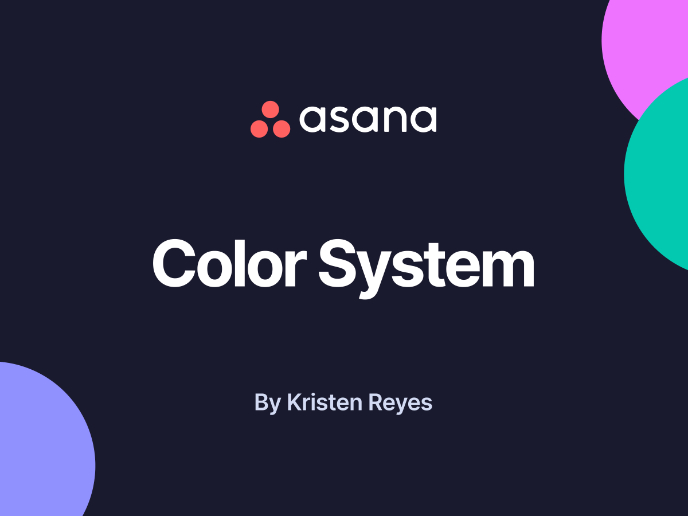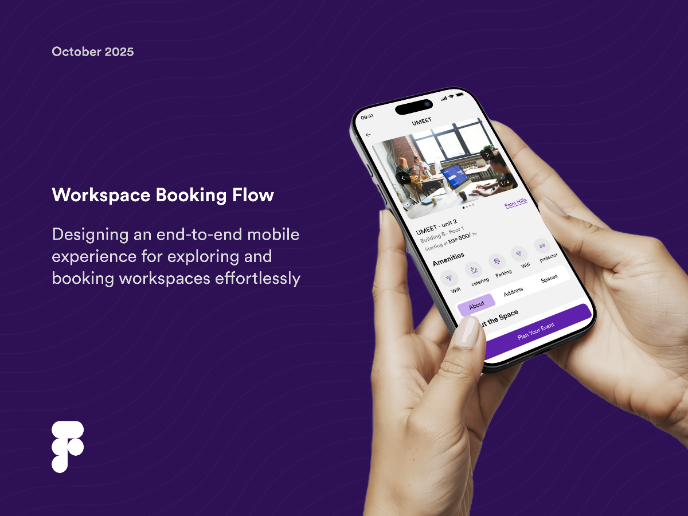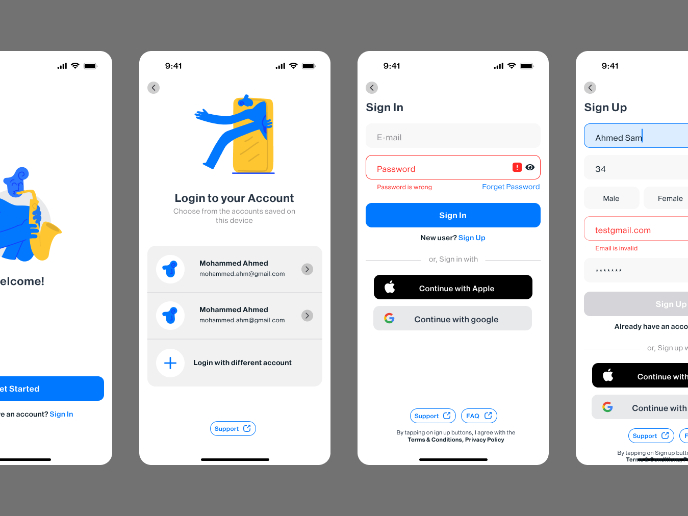Snipes - Heuristic Analysis
Usability is the backbone of any website or app, ensuring users can effortlessly navigate and achieve their goals. In this analysis of Snipes, I highlight both areas where the user journey is interrupted and where it excels.
Snipes with its e-commerce platform offers products like shoes, streetwear, and accessories. With high levels of user interaction, from product filtering to checkout, the site provides an excellent case for analyzing usability principles.
Usability Heuristics
I will use the 10 Usability Heuristics from Nielsen Norman Group as a guideline to assess the website's user experience. These heuristics help identify key usability issues and areas for improvement. For a deeper understanding of each heuristic, you can explore more here.
1. Visibility of System Status
Visibility of system status refers to keeping users informed about what is happening within a system. The interface should offer clear and immediate feedback for actions taken by the user to establish trust and ensure that users know the current status and next steps. This heuristic is key for reducing confusion and enhancing overall user satisfaction.
Heuristic not met
There are several usability issues in the design, primarily related to hierarchy and feedback. First, the recommendation section is awkwardly placed between the cart and the saved items, making it easy to cause confusion.
Furthermore, there's a lack of feedback when users attempt to add favorite items to their cart without selecting a size. This absence of feedback can confuse users, as no error message informs them that a size must be chosen first. Similarly, when items are removed from the cart, no message confirms the removal, leaving users unaware of the status of their actions.
Recommendation
Implement clear feedback messages when users perform actions such as adding or removing items. This can be achieved by providing instant messages or visual cues to communicate the system's response to the user's actions. Place the recommendation section below saved items for better hierarchy.
2. Match Between System & the Real World
This heuristic emphasizes that a design should reflect familiar concepts from the real world to make it easier for users to understand. By aligning the online experience with the users' real-world expectations, the interface feels more intuitive and easier to navigate.
Heuristic met
Snipes successfully implements this heuristic. Products are displayed in a way that mimics a physical store, which helps users relate the digital experience to real-world shopping. Categories are organized clearly, allowing users to browse through different shoe styles, just as they would while walking down a store aisle. The filtering system feels intuitive, mirroring the segmentation of shoes in a store.
3. User Control and Freedom
This heuristic emphasizes the importance of allowing users to undo or redo actions easily. Users should feel they have control over the system, able to navigate back or exit a process without confusion or unnecessary steps. Providing an "emergency exit" helps users avoid frustration when they make mistakes.
Heuristic met with possible improvement
The system allows users to remove items from the "Saved for Later" list with a confirmation dialog, ensuring they don't accidentally delete something without intention. This gives users the freedom to change their minds and maintain control over their saved products.
Recommendation
Providing an additional "Undo" option after an item has been removed, in case the user changes their mind immediately after confirming the deletion. This would offer another layer of flexibility, improving the user’s sense of control over the interface.
4. Consistency & Standards
Users should not have to question whether different words, actions, or layouts mean the same thing across different parts of an interface or different platforms. By sticking to industry standards, designs become more predictable and easier to learn. This is further explained in Jakob's Law, you can read it here.
Heuristic met
Navigation elements, filtering options, and product listings follow conventions seen on other e-commerce websites. The visual design, layout, and categorization are familiar, reducing the cognitive load on users as they don’t need to learn new patterns. This reflects Jakob's Law, which states that users spend most of their time on other websites, and as a result, they expect your site to behave similarly.
5. Error Prevention
Error prevention is crucial in any design to ensure users do not commit mistakes that could disrupt their experience. This principle emphasizes preventing issues before they occur, either through clear instructions or error-prone conditions being removed.
Heuristic not met
In this instance, small-sized buttons on the top of the screen make it difficult for users to interact with navigation elements accurately, leading to potential errors and frustration. According to best practices, a standard touch target size is 44px by 44px; however this is a bit misleading, according to Steven Hoober’s research in his book on "Touch Design For Mobile Interfaces", to minimize rage taps, we need to aim for 42px on the top of the screen, and 46px at the bottom of the screen. In other areas, we could potentially go as low as 27px. This includes both the width and padding of an interactive element.
Recommendation
Provide additional padding around tappable areas to reduce the risk of accidental taps on adjacent items, especially for users with larger fingers or those in motion.
6. Recognition Rather than Recall
This heuristic focuses on reducing the cognitive load on users by allowing them to recognize information or actions rather than requiring them to recall details from memory. Systems that minimize memory load ensure a more intuitive experience for the user by keeping essential elements easily retrievable.
Heuristic met
Snipes effectively implements this principle during product searches. For example, if users partially remember a product name like “Nike Dunk” the site automatically adjusts search results in real-time to present various relevant options. The system helps guide users toward the correct product, even when the full name is not known. The suggested search results allow for flexible exploration and help users quickly find what they need.
7. Flexibility & Efficiency of Use
This heuristic focuses on providing users with shortcuts or advanced options to speed up frequent tasks. It allows users to customize their experience and adjust how they interact with the product based on their preferences or needs.
Heuristic not met
There is a lack of flexibility and advanced actions, particularly when it comes to managing saved items. For example, the "Save for Later" section requires users to manually remove each item individually, which can become tiresome for users with a long list. Additionally, there are no options for users to create personalized lists of favorite brands, limiting customization and reducing efficiency.
Recommendation
Bulk actions for saved items, allowing users to remove multiple items simultaneously, and a feature to create custom lists of favorite brands.
8. Aesthetic & Minimalistic Design
Ensures that interfaces are not cluttered with unnecessary information or elements. The focus should be on essential content, which makes the interface clean, easy to navigate, and helps users complete their tasks without distractions.
Heuristic met
The design is minimalistic, featuring only essential product details while avoiding unnecessary clutter. Each product category is clearly labeled, and there are no overwhelming or distracting elements, which helps users focus on their shopping experience. The "Get Cozy" and "Featured" sections are well-organized, featuring relevant images and products without adding excessive decorative elements or irrelevant content.
9. Help Users Recover from Errors
Users should be presented with clear and easy to understand error messages. They should explain what went wrong in simple terms and guide users toward a solution without confusion.
Heuristic met
The error messages communicate what went wrong when a user makes an error, such as entering an email without the "@" symbol or choosing a weak password. The system provides helpful feedback, including specific reasons for the error and what the user needs to correct it. This minimizes user frustration and enhances the overall usability.
10. Help & Documentation
This heuristic emphasizes the importance of providing users with easy to access and well organized documentation to help them with any questions or issues. While a system should ideally be self explanatory, users may still need assistance. Therefore, it's essential to offer clear help options that are easy to find.
Heuristic met with possible improvements
Snipes is offering a dedicated help section with accessible links such as FAQs, store locators, shipping information, and returns. Users can find these links in the footer and through a dedicated help page. These elements help users troubleshoot or find specific answers quickly.
Recommendation
Although the help section is present, it could be more prominent. Currently, users have to scroll all the way to the footer or click through a separate help page to find it. It could be more visible by integrating a floating help icon or placing a direct link to the help section in a more visible spot, such as the navigation bar.
Conclusion
In this project I walked you through an extensive evaluation of the Snipes e-commerce platform, analyzing its strengths and areas needing improvement.
Well implemented usability principles can lead to a more engaging and intuitive shopping experience also fostering long-term user retention. It reduces friction and ultimately encourages customers to complete their purchases. In e-commerce, even small enhancements in usability can lead to higher sales and long-term business success.
Tools used
From brief
Topics
Share
Reviews
2 reviews
Hey Franjo,
I really enjoyed going over your project.
The usability analysis is easy to follow and well structured, covering all the essential aspects. I appreciated the use of references, for further details, and the use of gifs for more complex user flows.
One thing that I would have done differently - placing the image / gif before the description, so that I already have an idea of what I should expect when reading the text. This is of course just a personal preference.
Cheers!
Cosmina Baranai
Your project provided an excellent starting point and served as a key reference for completing my own. It was incredibly easy to understand and follow. The design and presentation are minimal, clean, and precise, while the content strikes the perfect balance of detail, including all the necessary information. Outstanding work!
You might also like

Customer Journey Map for a Co-Working Space

Reimagining Asana's Color System

Responsive Main Screen

Latios - Free Portfolio Template for UX/UI Designers

Workspace Booking Flow - UI/UX Design

Login/Sign up Form
User Research Courses

Introduction to Product Management

The Product Development Lifecycle & Methodologies

























